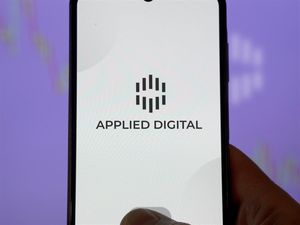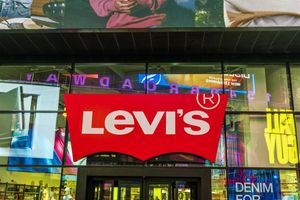The COVID-19 pandemic had a significant impact on how consumers received and paid for their visits to hospitals, clinics, urgent care centers and doctor’s offices in 2020, a new survey from U.S. Bank revealed.
The key findings:
- Virtual care and contactless payment methods ruled: Almost two-thirds of consumers received care via telehealth or phone consultations with healthcare providers in 2020, and more than half said they prefer safer, cleaner ways to pay for their care – contactless payment methods, mobile wallets and online portals.
- Digital payment options are gaining traction, but there’s room for improvement: Many clinics and doctor’s offices now offer options like online payment portals, mobile apps and contactless payment via mobile wallets, but just 28% of patients paid their bills via an online portal, and more than half received a bill in the mail.
- Patients want more digital options to pay their bills: 37% would like to pay via portal, and 32% would like to pay via a mobile app. Nearly half wish their healthcare provider allowed them to pay via contactless credit or debit card, and a third would like the option to pay via payment apps like PayPal, Zelle or Venmo.
- Many find paying their bills difficult: Nearly half said healthcare was the most difficult industry to make a payment, although nearly 70% said they agree that healthcare is keeping pace with other industries when it comes to payment innovation and providing creative ways to pay bills.
- Consumers are worried about the security of their data: The majority of those surveyed believe providers are trying to protect their data, but they also rank security as the top reason healthcare payments need more innovation.
- Affordability of care is a challenge: According to a recent survey by AccessOne, 66% of Americans say they are concerned they won’t be able to afford healthcare this year, and 75% surveyed by U.S. Bank said they would be interested in a discount for paying a bill via a lump sum or payment plan.
The new data is from a proprietary survey conducted online in February 2021 among 1,113 women and men across the United States. The third annual Healthcare Payments Insight Report, which this year the bank created to better understand the impact the COVID-19 pandemic has had on the healthcare industry, asked key questions about how those surveyed received care in the past year, how they paid for it, and how they preferred to pay. Of those surveyed, more than 95% had some type of health insurance, 100% had made a healthcare payment in the past 6 months, and all had visited a hospital, clinic, urgent care or doctor’s office in the past 6 months.
“COVID-19 drove a giant, unanticipated leap forward for virtual care delivery and healthcare payments digitization,” said Jamie Walker, CEO of Elavon, a U.S. Bank company. “Digital payment methods are gaining traction at an unexpected pace, but there’s still much healthcare providers can do to make it easier for patients to make payments how, where and when they want.”
Among the findings:
- Virtual care and contactless payment methods rule: 64% had a telehealth appointment in 2020, and 68% were in favor of expanding access to telehealth when feasible. Device sanitation became more important than ever during the pandemic: 76% of consumers said they were somewhat or extremely concerned about touching payment devices.
- Digital payment options are gaining traction, but there’s room for improvement: Within the last 12 months, 44% paid for their care at the doctor’s office at the appointment, 28% paid via the provider’s online portal, and 23% paid via mobile app. However, more than 32% paid by mail, and 21% called in to pay their bills.
- Patients want more digital options to pay their bills: Nearly half would like their provider to offer the option to pay via contactless credit or debit card, and nearly 60% said their perception of their provider would improve if he/she offered contactless options. Forty-three percent said they would be more likely to use a portal if they could pay their balance and view payment history.
- Many find paying their bills difficult: Nearly a third (28%) said they wished healthcare was more like the banking industry when it comes to payment types and payment options. Nearly a third said their provider’s digital options did not provide enough information about their payment history or balances due.
- Consumers are worried about the security of their data: Consumers continue to worry most about their Social Security numbers and credit/debit card information being stolen, but healthcare is perceived more positively now than in the past relative to other industries.
- Affordability of care is a challenge: 37% consider a medical bill of $100-$500 too expensive, and nearly half of those surveyed were surprised by a high medical expense in the last year. Of those who could not pay for an unexpectedly high expense right away, 38% chose to make recurring payments, and 26% used a credit card.
“Consumers are looking to healthcare to keep pace with the digital options they use in their everyday lives – mobile apps, contactless payments, pay by text, and online payments,” Walker said. “By introducing these options, healthcare providers will build loyalty and awareness as an industry that’s keeping pace with what consumers want.”
For full results of the survey and to download the report, please visit our website.
About U.S. Bank
U.S. Bancorp, with nearly 70,000 employees and $553 billion in assets as of March 31, 2021, is the parent company of U.S. Bank National Association. The Minneapolis-based company serves millions of customers locally, nationally and globally through a diversified mix of businesses: Consumer and Business Banking; Payment Services; Corporate & Commercial Banking; and Wealth Management and Investment Services. The company has been recognized for its approach to digital innovation, social responsibility, and customer service, including being named one of the 2021 World’s Most Ethical Companies. Learn more at usbank.com/about.
Member FDIC.
View source version on businesswire.com: https://www.businesswire.com/news/home/20210610005065/en/
Contacts
Kristin Kelly, U.S. Bank Public Affairs & Communications
Kristin.kelly@usbank.com | 303.585.4129






